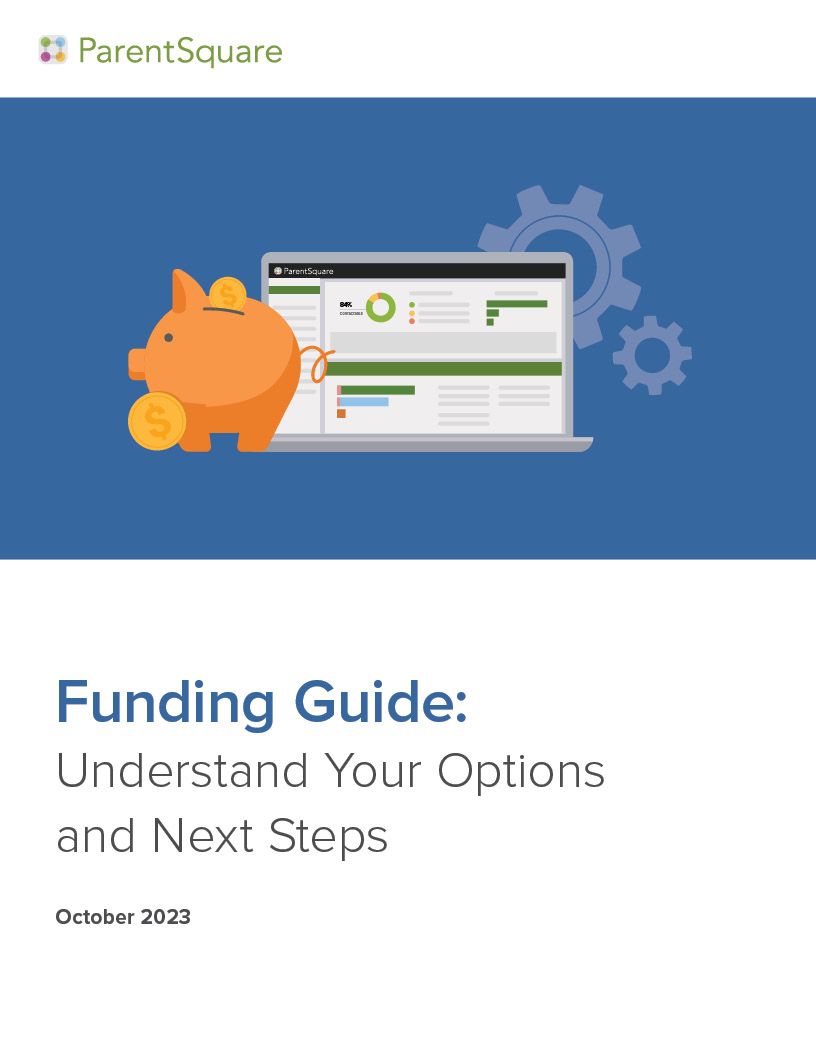Researchers from the Center for Educational Equity have found that family involvement is one of the strongest predictors of children’s success in school. But it’s known that K-12 students with disengaged parents and guardians are more likely to have lower grades and test scores, inconsistent attendance, negative attitudes towards education and more.

The new ParentSquare guide, Reaching the Last 10%: Engaging the Hardest-to Reach Families, has practical recommendations to address five common barriers to effective communication plus a companion infographic, 5 Barriers to Engagement Through Communications, with supporting data points behind the five situations.
To get on-the-ground experiences with overcoming these engagement barriers, we pulled together a panel of district communications leaders: Kellie Goral, executive director of public relations and marketing at Hampton City Schools (VA), Amanda Simpson, director of communications at Coppell Independent School District (TX), and Jessica Pupillo, director of communications at Mehlville School District (MO).
The hardest to reach?
In Amanda’s school district, the hardest-to-reach families tend to be those with children who are the first generation in their family to attend school in the U.S. Many of these families don’t know how to communicate with public schools, don’t understand how to access or use communication tools, or speak different languages.
Jessica’s district also has a large diversity of languages in her district, noting that some families speak a different language than they read, and identifying and supporting that variety of languages can be challenging.
All three mentioned that it is especially hard to reach families experiencing homelessness, transient housing, or high poverty. These families typically do not have a permanent address, and many don’t have a permanent phone number. Access to resources such as phone service, internet, and mail are constantly changing for these families, so it can be hard for districts to get updated contact information.

“There are all sorts of different scenarios that we’re trying to overcome to connect with all of our families, and the pandemic especially has increased the number of our students in transition. We know that when we start to see them not opening, not following through with things in the school, that it’s time to reach out and see if we can bring them back into the fold and see what support we can provide.”
Addressing contactability
Amanda and Jessica both noted the importance of school secretaries when obtaining and updating contact information. Face-to-face connection is crucial—particularly in elementary schools—to maintain an active school community. Kellie’s district benefits from parents being able to input their contact information independently through ParentSquare, and contact verification ensures this information stays up-to-date.
Overcoming language and cultural barriers
Several schools in Amanda’s district offer classes to help families learn and improve their English speaking and reading skills. These classes also provide important insight on the culture of public school to help families navigate an unfamiliar system.
Jessica mentioned that ParentSquare has been helpful to actually send families information directly translated in their preferred language. Plus, messaging with the two-way translation feature has greatly improved connection between multilingual families and teachers and administrators.
Handling information overload
Kellie noted how important ParentSquare has been for minimizing information overload by consolidating communications to one platform. Formerly, her district had other ways to get messaging out to families, but teachers, guidance counselors, and school social workers all were using separate independent apps, platforms, and tools to communicate with parents, which really contributed to information overload. Amanda mentioned that ParentSquare’s Daily Digest feature is great for minimizing overload on families, while still having the ability to override the feature if there’s an emergency or critical information to share.
“We’re looking forward to doing ongoing communication with our families to give them some of those tricks and tools so they can manage their information flow a little bit better.” —Jessica Pupillo, Mehlville School District
This conversation also addressed two other common challenges in the best practice guide: non-tech literate families and low bandwidth devices, and families facing non-school-related challenges. To view and listen to the conversation in its entirety, check out the webinar recording here.







